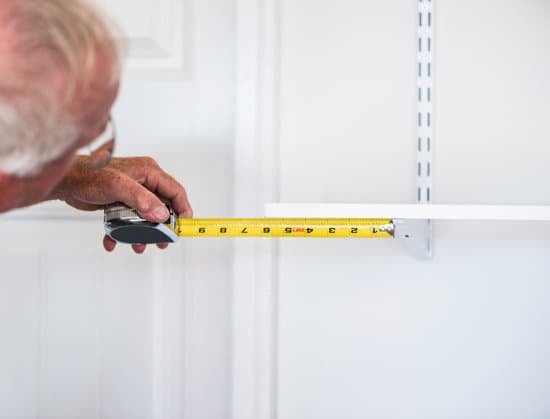Home improvements are not only a way to enhance the aesthetics and functionality of your living space but also a smart investment. Whether you are planning minor updates or major renovations, it is crucial to consider the best way to pay for these projects. This article will guide you through different payment options and help you determine how to finance your home improvements wisely.
As a homeowner, making upgrades to your property is essential for several reasons. Firstly, home improvements improve your living experience by creating a comfortable and functional environment that suits your needs and preferences. From kitchen remodels to bathroom makeovers, each project has the potential to enhance the quality of your daily life.
Secondly, investing in home improvements can significantly increase the value of your property. When it comes time to sell, these upgrades may attract potential buyers and allow you to command a higher selling price. Therefore, considering the financial implications when determining how best to pay for home improvements is vital.
Naturally, before delving into various payment options, it is crucial to evaluate your home improvement needs thoroughly. Assessing the current condition of your property and identifying areas that require improvement will help prioritize renovations based on your budget and necessity. Creating a clear plan in advance will enable you to make informed decisions about which projects to tackle first.
In summary, understanding the importance of home improvements as both a means of enhancing personal living spaces and increasing property value lays the foundation for approaching financing options strategically. By assessing your needs comprehensively and prioritizing renovations appropriately, you can chart an effective course towards finding the best way to pay for your home improvements based on your circumstances and objectives.
Evaluating Your Home Improvement Needs
Evaluating the current condition of your home is an essential step in planning for home improvements. By thoroughly assessing your property, you can identify areas that require attention and prioritize renovations based on your budget and necessity. This section will provide guidance on how to evaluate your home improvement needs effectively.
Assessing current condition
To begin evaluating your home improvement needs, take a look at the overall condition of your property. Consider factors such as the age of your home, its structural integrity, and any existing issues or damages that need to be addressed. Inspect each room thoroughly, including walls, ceilings, floors, and fixtures.
Make note of any repairs that are necessary to maintain the safety and livability of your home. For example, if you notice leaks or water damage, it’s crucial to prioritize fixing those issues to prevent further deterioration.
Identifying areas for improvement
Once you have assessed the current condition of your home, identify specific areas that could benefit from improvements. This could include outdated or inefficient features, such as old appliances or windows, as well as cosmetic changes like repainting walls or replacing flooring.
Consider both functional and aesthetic aspects when identifying areas for improvement. Think about what upgrades would enhance your daily life and increase the overall value of your property.
Prioritizing renovations based on budget and necessity
After identifying areas for improvement, it’s important to prioritize renovations based on both budget constraints and necessity. Evaluate which projects are essential for the safety or functionality of your home versus those that are more optional or purely cosmetic.
If you have a limited budget, focus on essential repairs first before moving on to discretionary upgrades. This way, you can ensure that critical issues are addressed promptly while also being mindful of financial limitations.
By evaluating your home improvement needs thoroughly and prioritizing renovations based on budget and necessity, you can plan a more effective and efficient strategy for enhancing your home. Remember to consider long-term value and weigh the potential benefits of each improvement before making final decisions.
Pros and Cons of Paying with Cash
One of the payment options homeowners have when financing their home improvements is paying with cash. While it may not be feasible for everyone, there are both advantages and disadvantages to consider when using cash for renovations.
Benefits of Paying with Cash:
- No Interest Payments: Perhaps one of the greatest advantages of paying with cash is that there are no interest charges associated with this method. By using money that you already have, you can avoid accumulating additional debt or paying extra fees over time.
- Immediate Ownership: When you pay with cash, you own your home improvements outright from the start. There are no lenders or financial institutions involved in the process, giving you complete control over your property upgrades.
- Simplified Budgeting: Using cash allows for simplified budgeting since you’re working within a fixed amount of money. This can help prevent overspending on renovations and keep your expenses manageable.
Drawbacks and Limitations:
- Limited Financial Resources: One significant drawback of paying with cash is that it requires having a substantial amount of savings available. Not everyone may have enough funds set aside to cover the costs of their desired home improvements.
- Reduced Flexibility: Paying with cash doesn’t provide the flexibility that other financing options might offer. If unforeseen circumstances arise during the renovation process, such as unexpected expenses or delays, it may be more challenging to handle those situations without any additional financial resources.
- Opportunity Cost: Using all your available cash for home improvements means that money won’t be available for other purposes, such as emergency savings or investments.
In summary, while paying with cash has its advantages such as avoiding interest payments and immediate ownership, it also comes with limitations like requiring a significant amount of funds and reduced flexibility during unforeseen circumstances. Homeowners should carefully evaluate their individual financial situation before deciding if paying with cash is the best choice for financing their home improvements.
Utilizing Home Equity
Explanation of home equity and its role in financing renovations:
Utilizing the equity in your home can be a viable option when it comes to paying for home improvements. Home equity refers to the difference between the value of your home and the amount you still owe on your mortgage. As you make mortgage payments, your equity increases, giving you access to funds that can be used for various purposes, including renovating your home.
Overview of Home Equity Loans and Home Equity Lines of Credit (HELOCs):
There are two common ways to tap into your home equity: through a home equity loan or a home equity line of credit (HELOC). A home equity loan allows you to borrow a lump sum of money based on the amount of equity you have in your home. This type of loan typically has a fixed interest rate and is repaid over a set term.
On the other hand, a HELOC acts more like a revolving line of credit. With a HELOC, you can borrow against your available equity as needed during what is called the “draw period.” This draw period usually lasts around 5-10 years, during which you only make interest payments. After that, there is typically a repayment period where both principal and interest must be paid.
Both options allow homeowners to use their home’s value as collateral for the loan, meaning they may offer lower interest rates compared to other forms of financing. Additionally, the interest paid on these loans may be tax deductible in certain circumstances, making them even more appealing.
It’s important to note that utilizing home equity for renovations does come with risks. By using your house as collateral, if you are unable to make loan payments, you run the risk of foreclosure.
It’s crucial to carefully consider your ability to repay the loan before choosing this option. Additionally, it’s wise to shop around and compare offers from different lenders to ensure you get the best terms and rates possible for your home equity loan or HELOC.
Exploring Personal Loans for Home Improvements
Personal loans can be an attractive option for homeowners seeking to finance their home improvements. This section will define personal loans and explore their potential applications in the context of renovating a house.
Defining Personal Loans
A personal loan is a type of unsecured loan borrowed from a financial institution, such as a bank or credit union. Unlike secured loans that require collateral, personal loans are typically granted based on the borrower’s creditworthiness and income. These loans offer borrowers flexibility in terms of how they use the funds, making them a popular choice for various purposes, including home improvements.
The Advantages of Personal Loans
One advantage of using a personal loan for home improvements is that it provides upfront funding without tapping into other assets or equity in the property. This means that homeowners can preserve their savings or avoid taking on additional debt against their homes. Additionally, unlike credit cards with high-interest rates, personal loans often come with lower interest rates and fixed repayment terms, making it easier to plan for monthly payments.
Moreover, personal loans allow homeowners to access larger amounts of money compared to alternative methods like credit cards. This can be particularly beneficial when undertaking significant renovations or major construction projects. Homeowners may also find it easier to qualify for a personal loan compared to securing additional mortgage financing or using other types of credit.
The Disadvantages of Personal Loans
Despite their advantages, there are some factors to consider before pursuing a personal loan for home improvements. One key consideration is the impact on the borrower’s overall debt load and credit score. Taking on additional debt through a personal loan could negatively affect creditworthiness if borrowers fail to make timely repayments.
Furthermore, while lower interest rates than credit cards are an advantage, they may still be higher than other financing options like home equity loans or government programs specifically tailored for home improvements. It is important to carefully compare interest rates, fees, and terms from different lenders to ensure borrowers are getting the best deal possible.
The Pros and Cons of Credit Cards for Home Improvements
Credit cards can be a convenient and flexible option for financing home improvements. They provide immediate access to funds, allowing homeowners to start their projects without delay. Additionally, credit cards often come with rewards programs that can earn users cash back, airline miles, or other perks.
One of the main advantages of using credit cards for home improvements is the convenience they offer. Homeowners can quickly and easily make purchases for necessary materials and services without having to go through a lengthy loan application process. This can save time and allow for faster project completion.
Furthermore, many credit card companies offer rewards programs that can benefit homeowners who use their cards for home improvement expenses. These rewards may include cash back on purchases, discounts on home improvement supplies, or even points that can be redeemed for travel or other perks. By using a rewards credit card responsibly, homeowners can essentially earn money back on their home improvement expenses.
However, it is important to consider the potential downsides of using credit cards for home improvements. One of the main drawbacks is the high-interest rates associated with credit card debt. If homeowners are unable to pay off their credit card balance in full each month, they may end up accruing significant interest charges over time.
Additionally, relying too heavily on credit cards for large-scale home improvement projects can lead to excessive debt accumulation. It’s crucial for homeowners to carefully consider their ability to make monthly payments and avoid overextending themselves financially. Creating a budget and sticking to it is essential when using credit cards as a payment method.
Government Programs and Grants for Home Improvements
The cost of home improvements can often be a major consideration for homeowners. Luckily, there are government programs and grants available that can provide financial assistance to those looking to make renovations or upgrades to their homes. These programs and grants aim to support homeowners in maintaining the value and safety of their properties while also promoting energy efficiency and sustainable practices.
One example of a government program is the Department of Housing and Urban Development’s (HUD) Title 1 Property Improvement Loan Program. This program offers loans up to $25,000 for home improvements, with the option for longer repayment terms than traditional loans. The loans can be used for a wide range of projects, including structural repairs, accessibility improvements, and energy efficiency upgrades.
In addition to loan programs, there are also government grants available specifically for certain types of home improvements. For example, the U.S. Department of Energy offers the Weatherization Assistance Program (WAP), which provides funding for low-income households to improve energy efficiency and reduce utility costs. The WAP assists eligible homeowners by installing insulation, weatherstripping, and other measures that help increase energy efficiency.
While government programs and grants can provide valuable financial assistance for home improvements, it is important to note that they often have specific eligibility requirements and application processes. Homeowners should research each program or grant thoroughly to determine if they meet the criteria before applying.
Overall, government programs and grants can be an excellent resource for homeowners seeking financial assistance for home improvements. By taking advantage of these opportunities, homeowners can make necessary upgrades to their homes while saving money on costs and increasing the overall value of their properties.
| Program/Grant | Description | Eligibility Requirements |
|---|---|---|
| HUD Title 1 Property Improvement Loan Program | Offers loans up to $25,000 for various home improvement projects | Must be the homeowner and have adequate income to repay the loan |
| Weatherization Assistance Program (WAP) | Provides funding for energy efficiency improvements in low-income households | Household income must fall below specific guidelines and meet other eligibility criteria |
The Importance of Budgeting and Financial Planning
Budgeting and financial planning play a crucial role in successfully paying for home improvements. When embarking on any renovation project, it is vital to set a realistic budget to ensure that the costs of the improvements do not spiral out of control. Effective financial planning will help homeowners determine how much they can afford to spend on upgrades and find the best way to pay for them.
Creating a budget for home improvements starts with assessing one’s finances and determining how much money can be allocated towards renovations. This involves considering factors such as income, savings, and existing debts. Homeowners should also take into account any unexpected expenses that may arise during the renovation process.
Once a budget has been established, it is important to stick to it and avoid overspending. One way to do this is by obtaining quotes from multiple contractors or suppliers and comparing prices before making any decisions. It is also advisable to set aside some extra funds as a contingency in case there are any unforeseen costs or changes in plans.
In addition to budgeting, financial planning is essential when considering long-term financing options for home improvements. Whether utilizing personal loans, credit cards, or government programs, it is crucial to evaluate the terms and conditions of these payment methods carefully. Interest rates, repayment periods, and eligibility requirements should all be taken into consideration when selecting the best option that aligns with the homeowner’s long-term financial goals.
Overall, budgeting and financial planning are key components of successfully paying for home improvements. By setting realistic budgets and carefully evaluating various financial options, homeowners can ensure that their renovation projects stay within their means and are financially sustainable in the long run.
| Benefits | Limitations |
|---|---|
| – Helps prevent overspending | – May require research and negotiation |
| – Allows for a clear assessment of available funds | – Requires discipline to stick to the budget |
| – Provides peace of mind by avoiding financial strain | – Unexpected costs can challenge the budget |
Conclusion
In conclusion, finding the best way to pay for home improvements ultimately comes down to individual circumstances and preferences. The options discussed in this article provide a range of choices, each with their own pros and cons.
Cash payments offer the benefit of avoiding debt and interest payments but may not be feasible for larger projects. Utilizing home equity through a loan or line of credit can provide flexibility and potentially tax-deductible interest but requires careful consideration and understanding of the financial implications.
Personal loans offer another avenue for financing home improvements, providing a lump sum with fixed repayment terms. While these loans may have higher interest rates than some other options, they can still be an attractive choice for those who prefer a structured repayment plan.
Credit cards can be convenient for smaller projects or as a short-term solution but should be used cautiously due to high-interest rates and potential accumulation of debt. It’s important to consider one’s ability to make timely payments and avoid carrying a balance.
Lastly, government programs and grants are worth exploring for homeowners who meet specific eligibility requirements. These programs can offer financial assistance but often come with restrictions or application processes that need to be carefully followed.
Ultimately, homeowners should assess their current financial situation, project needs, goals, and long-term plans before deciding how to finance their home improvements. By evaluating the benefits and drawbacks of each option presented here, individuals can make an informed decision that aligns with their unique circumstances and helps them achieve their desired renovations without causing undue financial strain.
Frequently Asked Questions
Is it wise to use home equity for home improvements?
Using home equity for home improvements can be a wise choice in certain situations. Home equity refers to the difference between the market value of your home and the outstanding balance on your mortgage. If you have a significant amount of equity built up in your home, using it for home improvements can provide several benefits.
First, it allows you to access funds for renovations without taking on additional debt, which can be advantageous if you have a good interest rate on your mortgage. Additionally, renovating your home can increase its value, meaning that you may be able to recoup the money spent on renovations when you eventually sell the property. However, it is important to carefully consider whether tapping into your home equity is the right decision for your specific circumstances, as borrowing against your home does carry some risks.
How can I save $$ on a house remodel?
There are several strategies that can help homeowners save money on a house remodel. One effective way to reduce costs is by setting a realistic budget and sticking to it throughout the remodeling process. This means thoroughly researching materials, comparing prices from different suppliers and contractors, and being selective about which aspects of the remodel are truly necessary.
It is also worthwhile to consider doing some tasks yourself rather than hiring professionals if you have the necessary skills and expertise. Another way to save money is by reusing or repurposing existing materials or fixtures whenever possible instead of purchasing new ones. Additionally, obtaining multiple quotes from different contractors can help identify competitive pricing options and potentially negotiate better deals.
Are renovation loans a good idea?
Renovation loans can be a good idea depending on individual circumstances and needs. These loans are specifically designed to finance home renovations or improvements and often offer favorable terms such as low interest rates or longer repayment periods compared to traditional loans or credit options. Renovation loans provide homeowners with the funds needed to make necessary upgrades without depleting their savings or relying heavily on credit cards or personal loans with higher interest rates.
They allow for larger renovation projects that can potentially increase the value of your home. However, it’s important to carefully assess the costs and risks associated with renovation loans, including considering your ability to make monthly loan payments and any potential impact on your overall financial situation. It may be beneficial to consult with a financial advisor or mortgage specialist to determine if a renovation loan is the right choice for you.

I’m thrilled to have you here as a part of the Remodeling Top community. This is where my journey as an architect and remodeling enthusiast intersects with your passion for transforming houses into dream homes.





